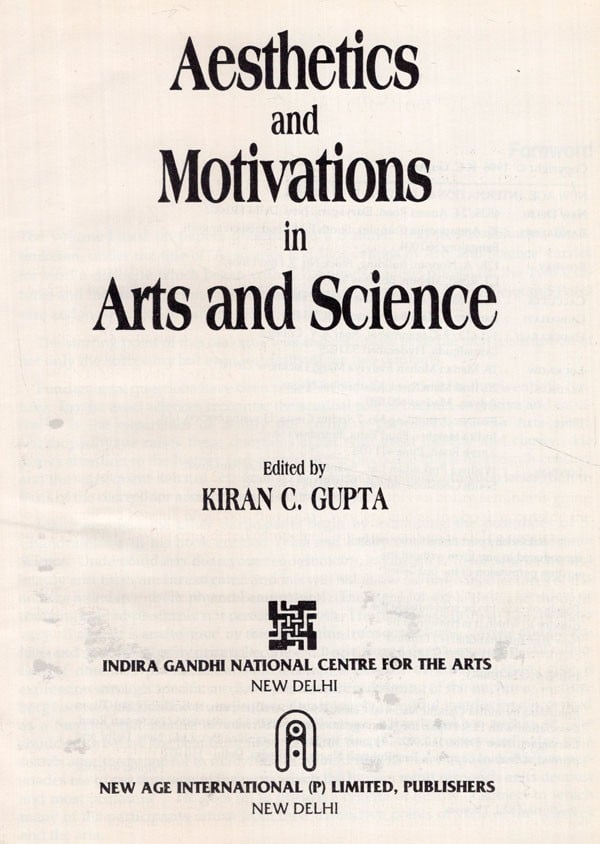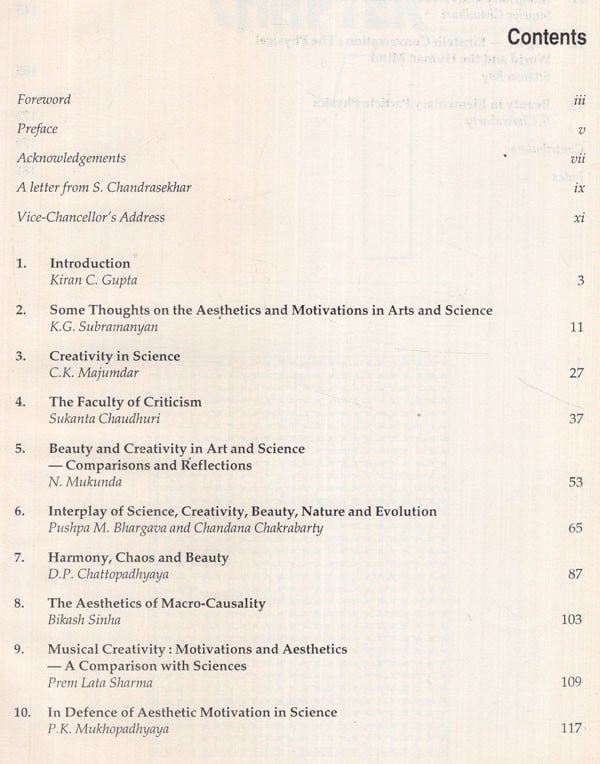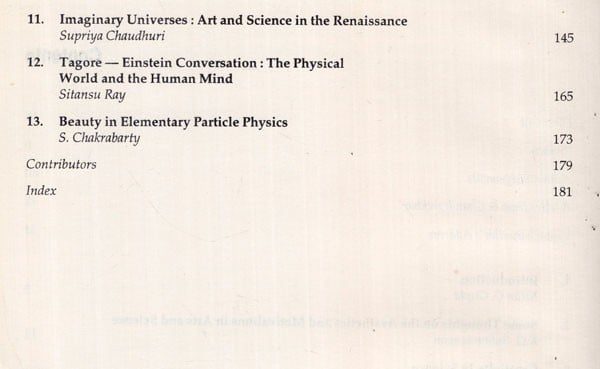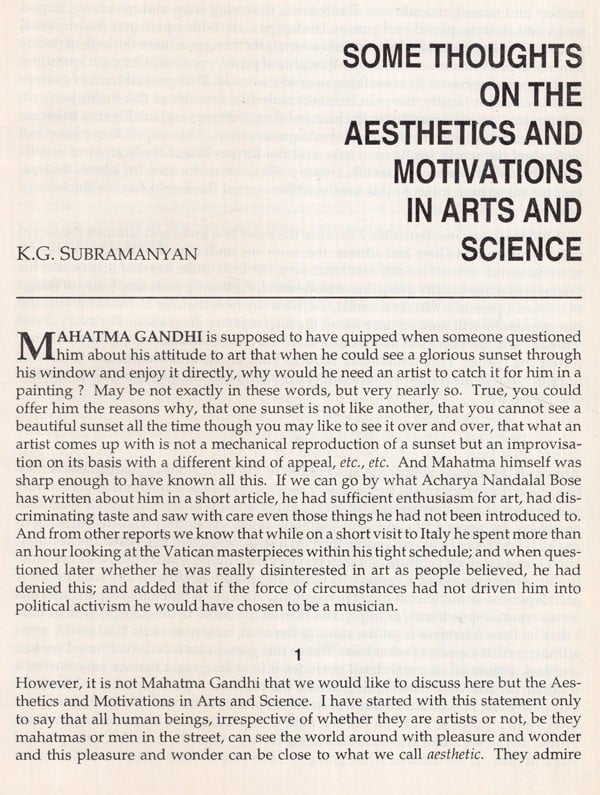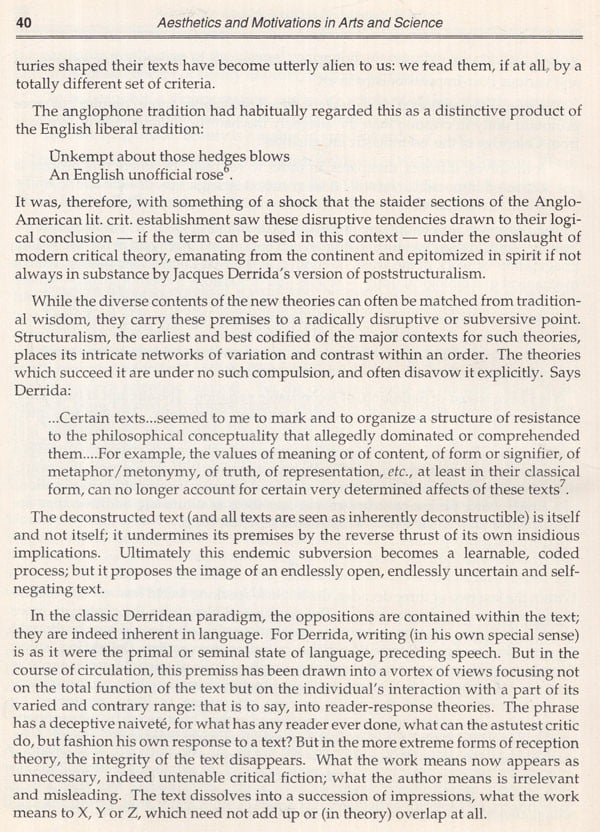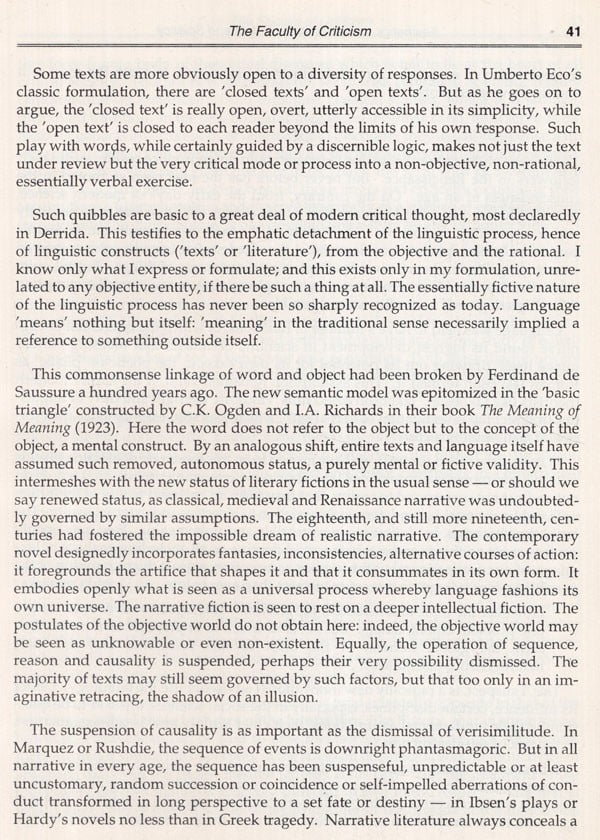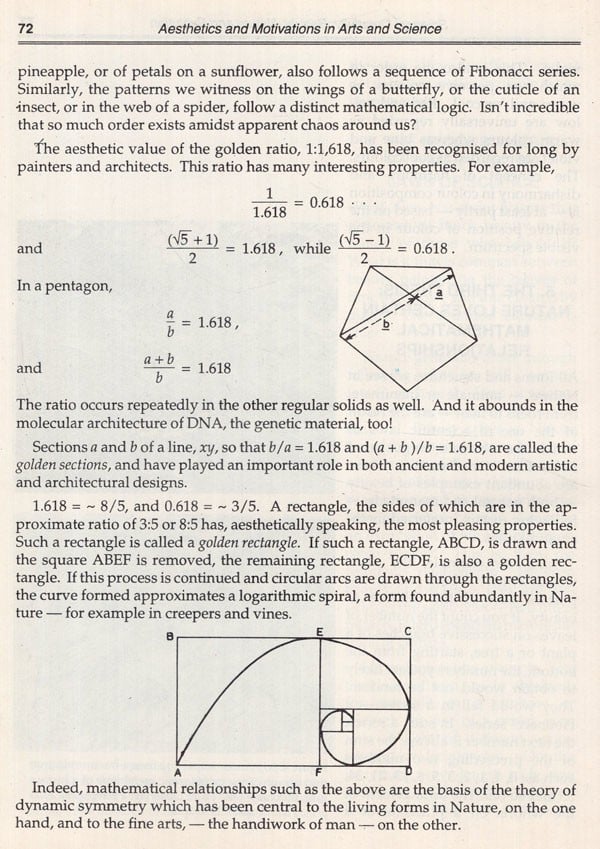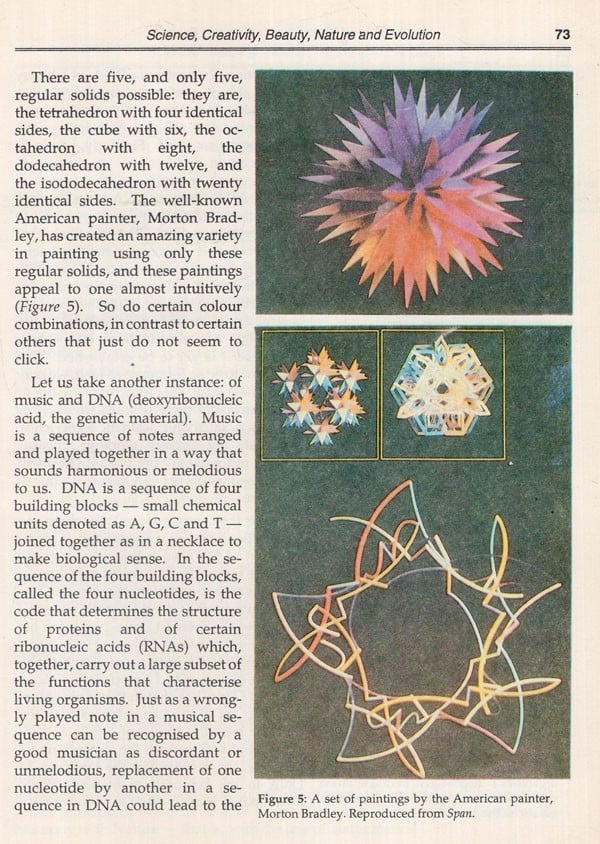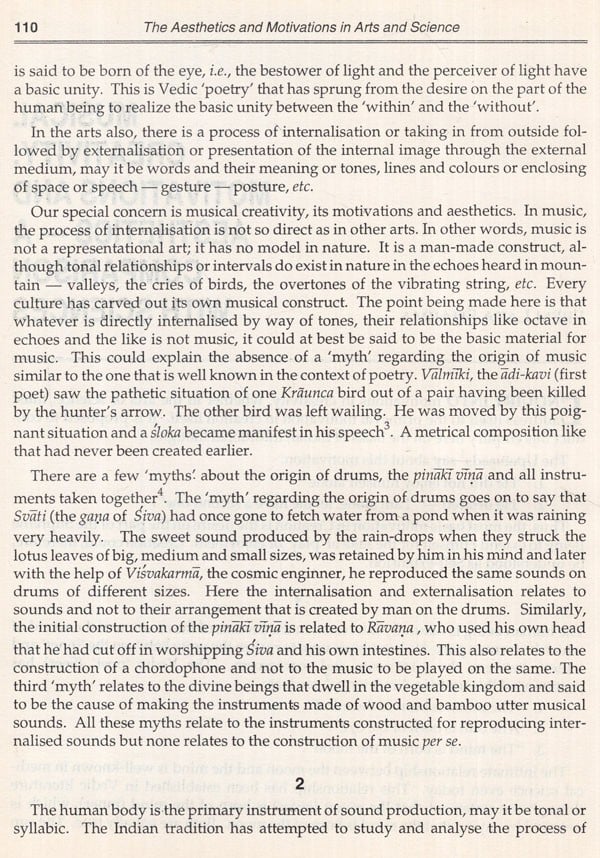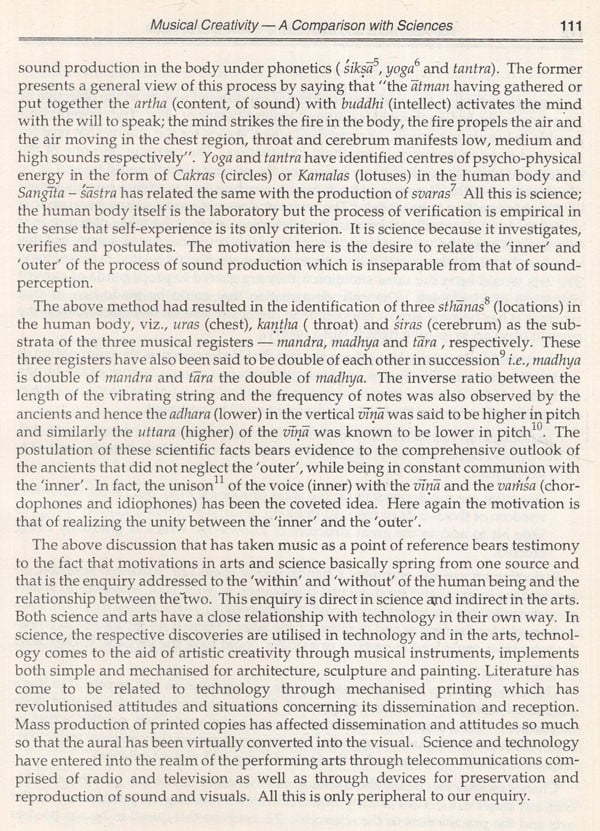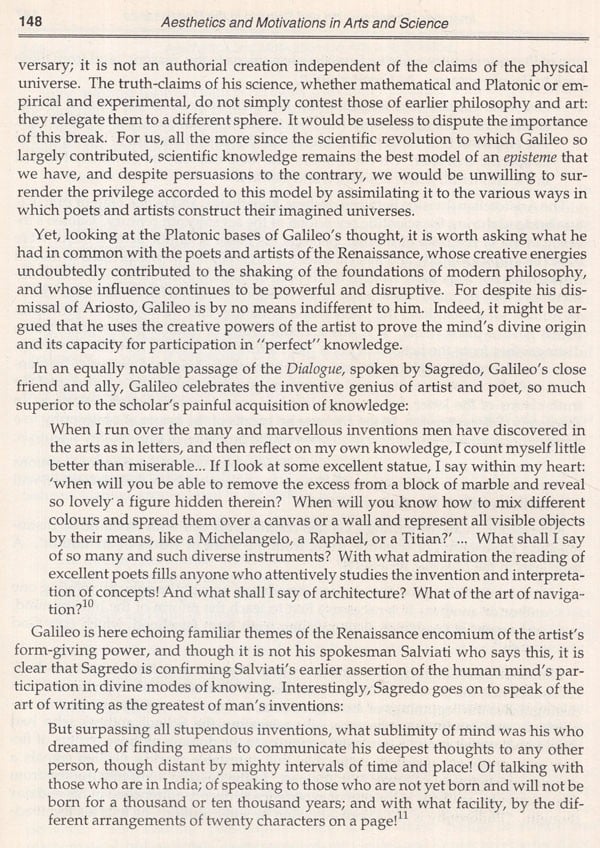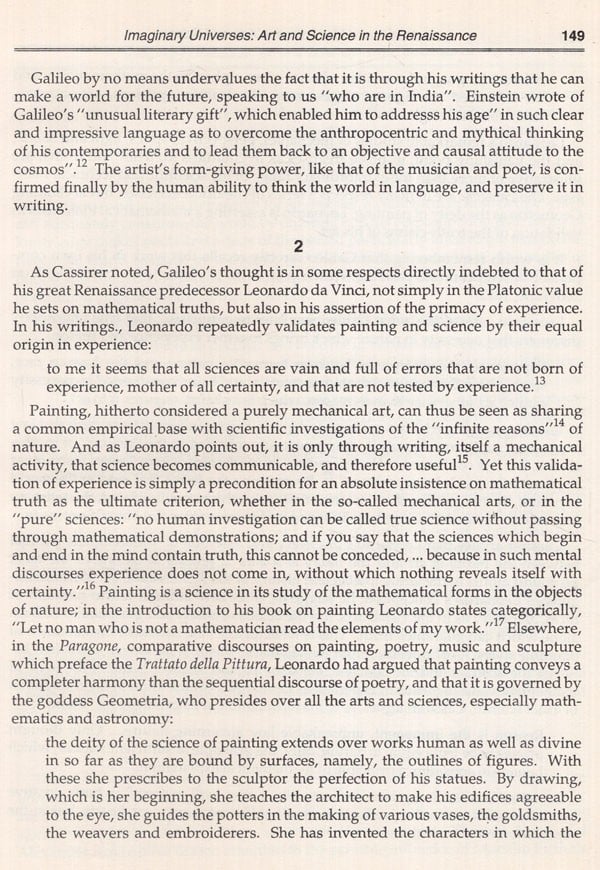
Aesthetics and Motivations in Arts and Science (An Old and Rere Book)
Book Specification
| Item Code: | UAT612 |
| Author: | KIRAN C. GUPTA |
| Publisher: | Indira Gandhi National Centre for the Arts |
| Language: | English |
| Edition: | 1996 |
| ISBN: | 9788122407464 |
| Pages: | 198 |
| Cover: | HARDCOVER |
| Other Details | 10.00 X 7.50 inch |
| Weight | 610 gm |
Book Description
This volume is a collection of twelve papers invited for a National Seminar held at the Department of Physics, Visva-Bharati from February 19 to 21, 1993. The purpose of the seminar was to bring together scientists and non-scientists for exchange of views on 'the quest for Beauty and Truth' and 'the differences in the patterns of creativity' in Arts and Sciences. The inspiration for organizing such a meeting has come from Nobel Laureate Professor S. Chandrasekhar's remarkable book entitled Truth and Beauty: Aesthetics and Motivations in Science. In a preparatory meeting, it was decided that six-to-eight base papers by experts in their own fields alongwith shorter talks by other invitees would form the basis of intimate and leisurely discussions to cover the main themes of the seminar.
The seminar was inaugurated on the morning of February 19, 1993 by the Vice Chancellor of Visva-Bharti. His short but elegant address is reproduced without any change. Due to last minute problems, Professor P.M. Bhargava and Professor D.P. Chattopadhyaya could not attend the seminar. However, their papers were circulated and we are very happy to include these base papers in this volume. On the other hand, due to various reasons, we sincerely regret non-inclusion of some of the lectures delivered during the course of the seminar.
It is our earnest hope that this publication will generate sufficient interest in the academic community for further meaningful dialogues among practitioners in arts and sciences as well. Gurudev Rabindranath Tagore, the founder of Visva-Bharati, always laid great stress on the 'total education' of a child. It is desirable that our educational system becomes such as to develop in us a keen aesthetic sense so that the concepts of Truth and Beauty become integral to our thinking, integral to our living.
The volume based on papers presented in a Seminar held in Visvabharati, Shan tiniketan, under the title of Aesthetics and Motivations in Arts and Science' carries forward a dialogue which began with CP. Snow's famous phrase on the Two Cultures and the writings of many modern Scientists, particularly Heisenberg and Poincare and most of all S. Chandrasekhar.
The starting point of this dialogue was and continues to be the tacit assumption of not only the autonomy but even insularity of the two domains.
Fundamental questions have been raised on the assumptions in the twentieth century. Do the exact sciences recognise the seminal role of the non-cognitive and intuitive? Is the experience of beauty the exclusive prerogative of the Arts? Prof. Mukhopadhyaya raises these questions again with great lucidity and clarity. He draws attention to the history and context of the discourse in the nineteenth century and the subsequent debates. He goes on to ask the more basic question of the definitions of the disciplines and the nature of creativity.
Many amongst the other participants begin by examining the postulates of S. Chandrasekhar in his book entitled Truth and Beauty: Aesthetics and Motivations in Science Understandably the notions of symmetry, asymmetry, chaos and order and beauty and truth are investigated and interpreted in the fields recognised as the arts and the sciences—both physical and natural. The quest for discovering the ideal or unifying behind phenomena is common to both. The patterns of growth and methods vary. If all that is understood by science begins from conjectures, axioms and postulates and seeks to identify principles, the arts begin from a deep experience and reflection of observed phenomenon and through a process of internalisation, give it expression through specific media to present a new ordering of the universe. Heisen berg had repeatedly drawn attention to the strangely beautiful interior he discovered as a fundamental feature of quantum mechanics. Chandrasekhar speaks of "the shuddering before the beautiful, this incredible fact that a discovery motivated by a search after the beautiful in mathematics, should find its exact replica in Nature persuades me to say that beauty is that to which the human mind responds at its deepest and most profound". He goes on to present a criteria of beauty, a subject to which many of the participants return from their distinctive points of view of the sciences and the arts.
HE TITLE Aesthetics and Motivations in Arts and Science may sound a trifle too Further, it may give of encompassing almost all creative endeavours in arts and sciences. Due to these reasons, I will first define the scope and format of the seminar on which this publication is based. I will also discuss briefly the themes of motivations and aesthetics in theories of basic science.
Aesthetics in arts, be it poetry or painting or music or dance or some other form, is a well-studied subject. The same cannot be said of sciences. However, many do accept that the pursuit of "basic science" brings in sensitivity to and criteria of beauty, truth, harmony, order and pattern. A large number of scientists like Poincare, Einstein, Heisenberg, Dirac and many others have eloquently expressed their deeply-held convictions on the relevance of aesthetic considerations in scientific pursuits. More recently, Professor Subramanyan Chandrasekhar, one of the leading scientists of our times, has written a remarkable book entitled Truth and Beauty: Aesthetics and Motiva tions in Science. We have borrowed both the title and the main themes of the seminar from this seminal work of a great scientist. Chandrasekhar's book is a collection of seven lectures which fall into two categories: whereas the first four lectures deal with questions of aesthetics and motivations in the pursuit of physical theories, the last three lectures are basically biographical in nature. In his deeply elegant, incisive es says Chandrasekhar presents an insight into three topics: (1) The quest for beauty and truth in the theories of Physics, (ii) The similarities and differences in the patterns of creativity of Shakespeare, Beethoven, and Newton, and (iii) The aesthetic base of Einstein's general theory of relativity. The author has looked into these items in the context of basic science alone. According to him, 'basic science seeks to analyze the ultimate constitution of matter and the basic concepts of space and time'. After analyzing in depth the motivations and the patterns of creativity in the works of Kepler, Michelson, Rutherford, Heisenberg, Dirac and others, Chandrasekhar says: "The motivation has always been systematization based on scholarship. He goes on to pose a question: To what extent are aesthetic criteria, like the perception of order and pattern, form and substance, relevant in the pursuit of science?"
In the third chapter, Chandrasekhar looks into the patterns of creativity of three great men Shakespeare, Newton and Beethoven. Carrying out an incisive analysis, he shows, in the works of both Shakespeare and Beethoven, the importance of con tinuity of growth of their minds and the organic unity spanning their entire lives, with the masterpieces towards the end. On the other hand, with Newton, we see an ex plosion of genius at the early age of twenty three years, a gap, then the greatest intel lectual feat in early forties, and thereafter no serious scientific work. At this point, Chandrasekhar comments: Can we say that we see the apparent inability of a scientist to continually grow and mature! One observes a similar pattern of creativity in the case of Albert Einstein. In 1905, at the young age of twenty six years, Einstein pub lishes three epoch-making papers on the special theory of relativity, the theory of Brownian motion, and the theory of photoelectric effect. In 1915, he gives us the general theory of relativity, called by H. Weyl as 'one of the great examples of the power of speculative thought'. But from 1925 on until his death, Einstein fails to come out with any worthwhile scientific work.
According to Chandrasekhar, although there are differences in the patterns of creativity among the artists and the scientists, the quest is not different but after the same elusive beauty. Looking back at his own investigations spanning a period of fortyfive years, Chandrasekhar writes: "... the most shattering experience has been the realization that an exact solution of Einstein's equations... provides the absolutely exact representation of untold numbers of massive black holes that populate the universe.
This shuddering before the beautiful, this incredible fact that a discovery motivated by a search after the beautiful in mathematics should find its exact replica in Nature, persuades me to say that beauty is that to which the human mind responds at its deepest and most profound". In the fourth lecture devoted entirely to the topic of beauty and the quest for beauty in science, Chandrasekhar presents some definitions/criteria of beauty. Then, he applies these to some theories of basic science. In particular, he convincingly argues that the general theory of relativity appeals to our aesthetic sense because it is beautiful, and it is beautiful because it satisfies the criteria for beauty.
**Contents and Sample Pages**
